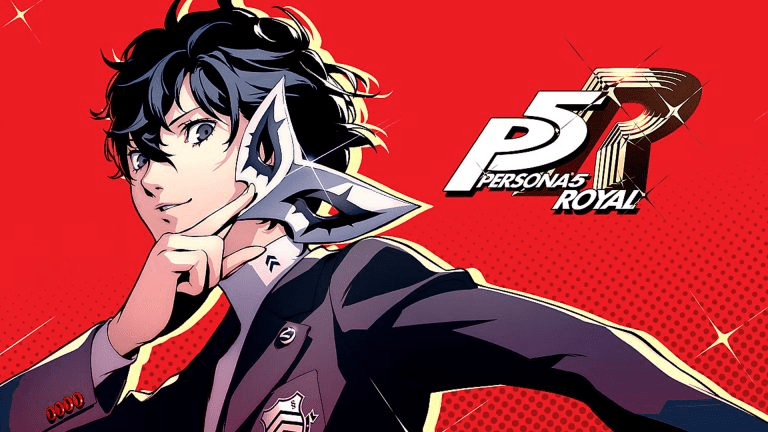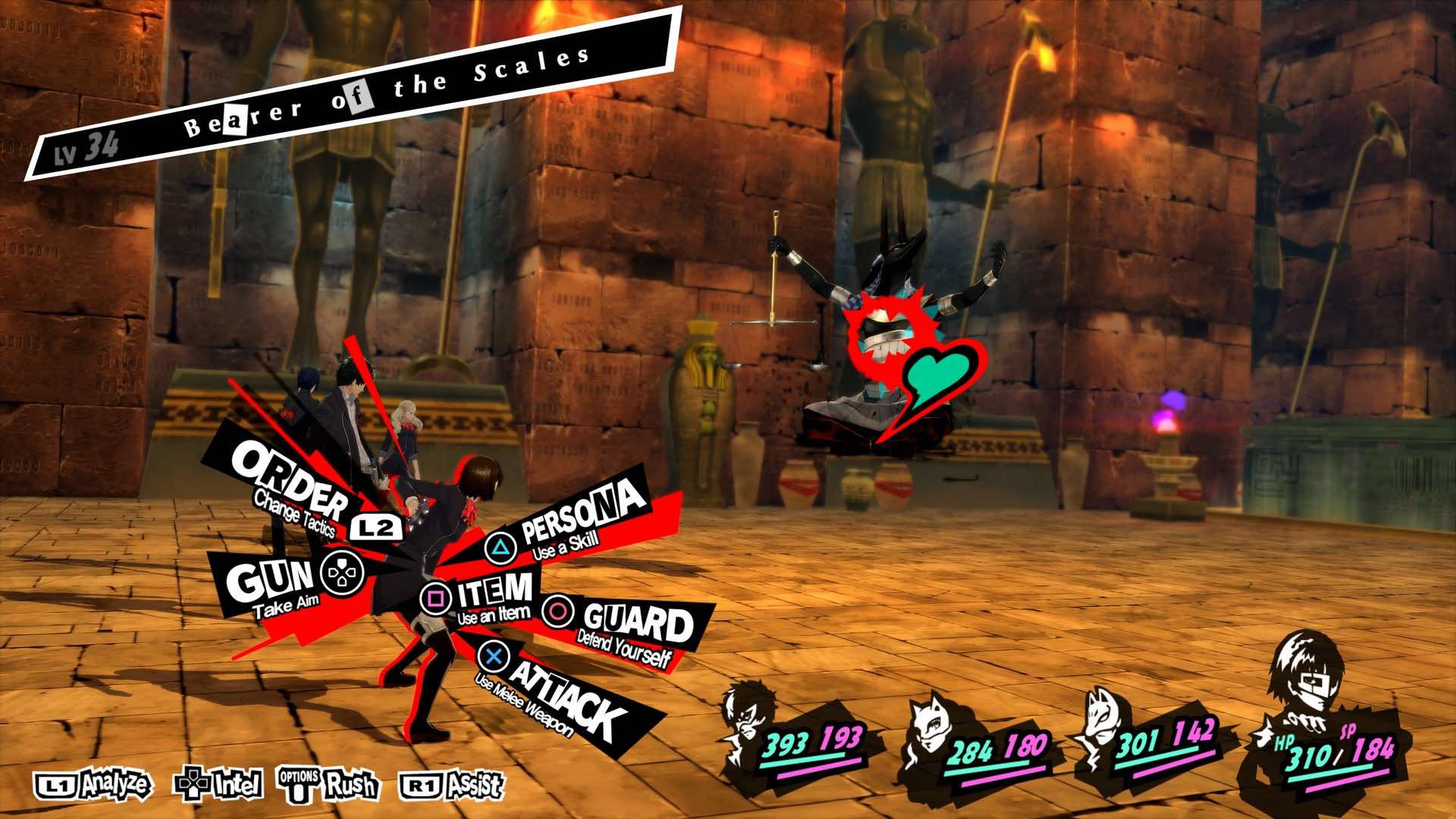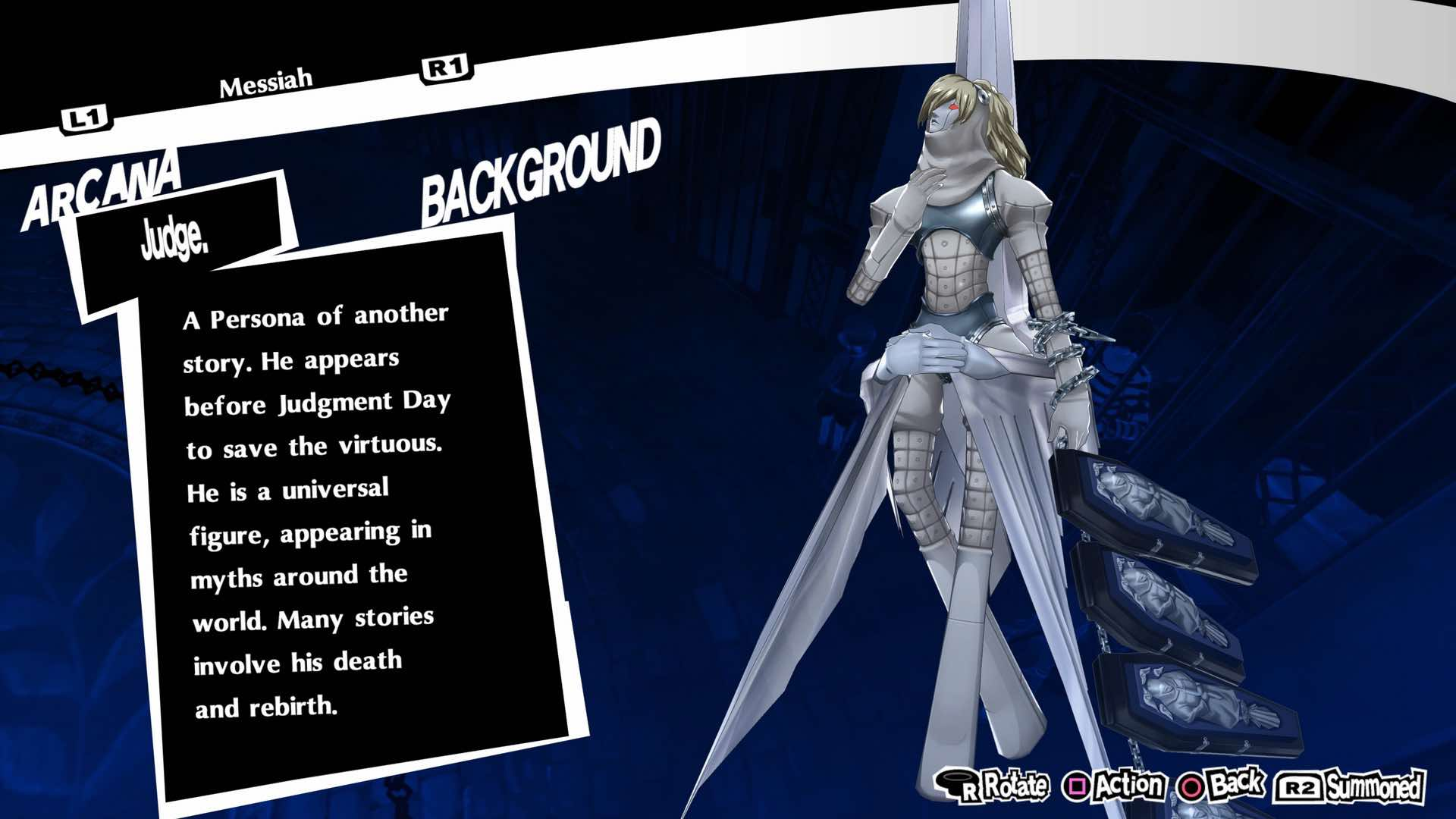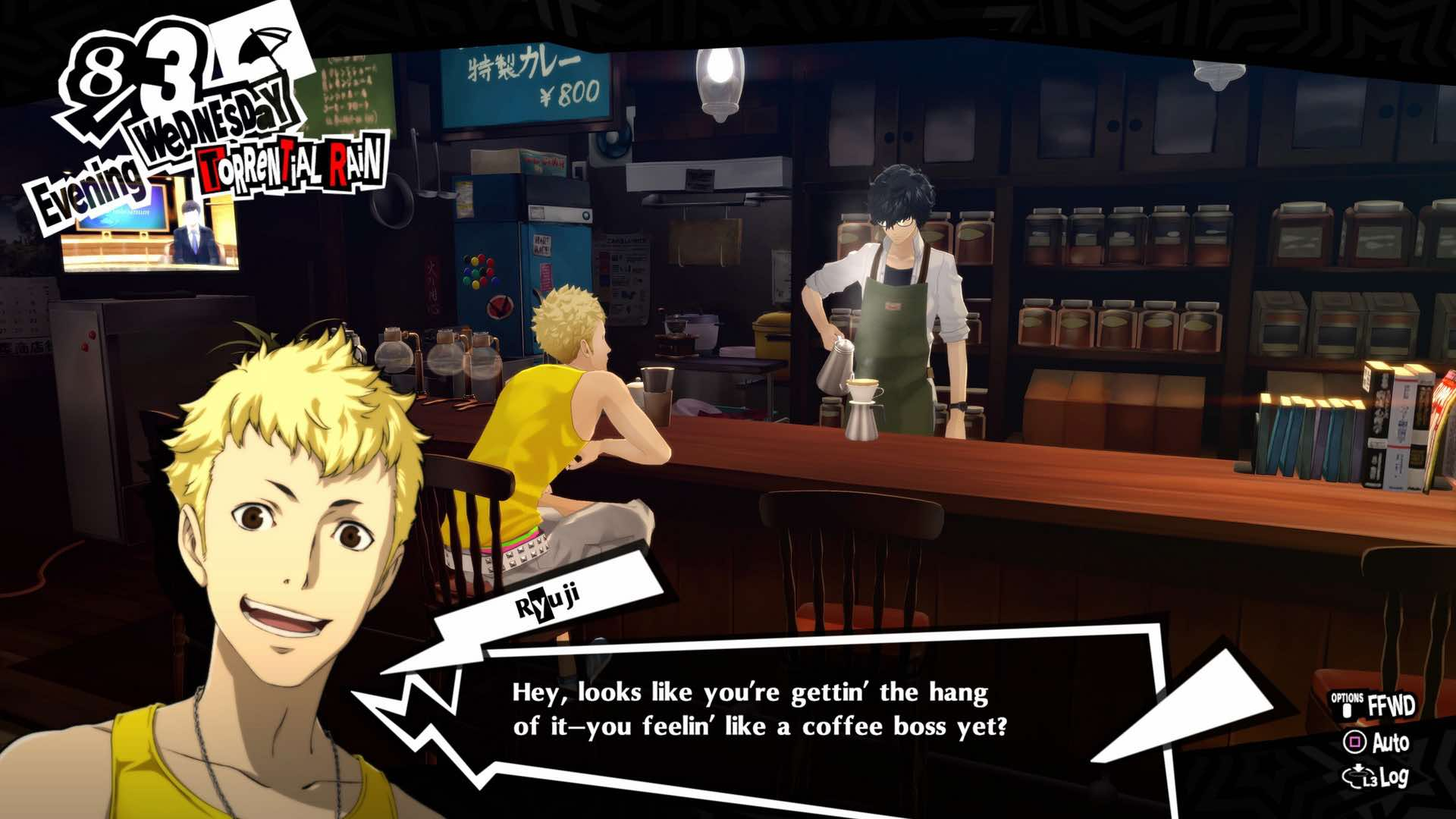
With a Steam, Switch, and Xbox release here, the team at Catholic Game Reviews wanted to review the very popular yet controversial title Persona 5 so that Catholics can make a more informed decision as to whether they should be buying it (bet you never saw it coming =p). We will be covering the Royal edition of the game which is a re-release of the original Persona 5 featuring additional content such as a new party member, a new semester/dungeon, and lots of other quality of life changes since this is the version that the systems mentioned earlier will be receiving. However these new additions won’t be covered in much detail and will more so be a general review. Please note this review covers some particularly heavy & mature topics as well as spoilers to properly analysis the game from a moral perspective.
Now before we get into the review I wanted to give some personal background. I played Persona 5 before I converted to the Catholic faith. This was back when I was fresh out of high school, off a recommendation of some friends and seeing how fun Joker was in Smash Bros. Now this time wasn’t the best for me, and I won’t get into too much detail, but given how fun Persona 5 was, it helped me keep my head up. It also encouraged me to try to become a better person. After playing it, I got really invested into the series playing Persona 2 and 3 and watching playthroughs of Persona 4 and Q.
This might sound funny, but the Persona series was one of the reasons that led to my conversion to Christianity. Back then I thought that the angels and demons you could use in the games were really cool, so when this protestant evangelist gave me this bible one day at my college campus, one of the reasons I considered reading it was to learn the lore behind these figures. But this bible was one of those mini bibles that only have the New Testament, so I ended up starting in Matthew thinking it was gonna be some cool lore but being utterly surprised when it was a book full of striking and strange teachings. I kept reading despite how insane it sounded to me as a secular youth and became convinced that Jesus of Nazareth was something more than had even been described to me. And the imperfect conviction of quickly accepting all this came upon out of fear of going to the hell that Jesus described, “in that place there will be weeping and gnashing of teeth” and “fire does not end”. And after a long and painful process of conversion, and learning to love God for more wholesome reasons, I am where I am today, a member of the One Holy, Catholic, and Apostolic Church.
So looking back at this game post-conversion gives me mixed feelings as I found it fun but now have lots of moral concerns about the series. It’s a complicated relationship as I can still accept their good aspects but also have to carry a critical lens when analyzing the heavy moral baggage that the series will place upon a Christian. It’s finally time for CGR to review Persona 5!
Persona 5 is a turn-based JRPG which takes place in Tokyo where you play as Joker, a leader of a vigilante group known as the Phantom Thieves. They are a group of high schoolers who were gifted with the powers of a Persona, Personas are physical manifestations of their user’s personalities that fight for them using various skills such as magic. These high schoolers target corrupt leaders in society to make them have a “change of heart”. They do this by entering their targets’ minds through a world known as the “metaverse” (is this what inspired Mark Zuckerburg?) which allows them to enter their hearts as a physical dimension. Here they fight physical manifestations of the person’s corrupted desires taking the form of various figures and monsters from various religions (including Christianity), mythology, pop culture, etc. Their ultimate objective is to find the target’s treasure, which is an object that represents the point in their lives where they allowed themselves to become corrupted by one of the capital sins to obtain some desire such as power or wealth. After stealing the treasure, and returning to the real world, their target begins to repent of their crimes, often in a very dramatic fashion. They balance their objective of bringing justice to society with living their lives as ordinary high school students, which means having to study, hanging out/going on school trips, and spending time with their family.
Reflecting upon the story, one can certainly appreciate that Persona 5 acknowledges the existence of sin. Contrary to the popular culture notion of “we’re all basically fine” and any attempt to discuss it as ruining “good vibes” or being “insensitive”, Persona shows us in striking clarity the reality of sin. The targets of the Phantom Thieves are by most accounts, “normal people”, who are overwhelmed by their sins and then proceed to do horrendous things such as rape and murder. While we may not all commit such horrendous things, sin is a dark power that lurks and works within us all. Our capacity for evil is limitless.
While the people in Persona 5 have the Phantom Thieves as a hope, Christians know that, without the power of Christ, no one can be fully cleansed of their sins. When man finds himself under the oppressive chains of sin, his ability to do good is severely limited, and he is doomed to hell for grievous offenses that he has no capacity to repent from. However Christ, the true “thief”, has come with his death on the cross, and has stolen sin’s power over us. If we cooperate with The Divine Mercy, we are no longer under the slavery of sin but become partakers of the divine nature as St. Peter tells us (2 Peter 1:4). Accepting grace means that we will be free to live out the good works that we were created for and can ultimately obtain a place in heaven.
There is also the “changing of heart” to reflect upon. The Catholic Church teaches that we have free will: “God created man a rational being, conferring on him the dignity of a person who can initiate and control his own actions.” (CCC 1730). We must choose to accept God, He does not force anything upon us – even his grace must be willingly accepted. The change of hearts that the Phantom Thieves perform are worrying as one could say they are forcing people to repent against their will. The receiver does not initially accept the change of heart until after they start occurring. You could say that the phantom thieves are just taking the scales away from their mind and making them see what the horrible things they have done with honesty. If we do take that view that it is forcing them to change against their will, his is contrary to God’s gift of free will as he freely and abundantly gives us his grace, even to the worst of sinners, but it’s still up to us to choose to accept that grace. This is why Christians can never force someone to convert to Christianity, as we have to respect free will. This isn’t to say for one minute that what the villains are doing is right, but only they should choose to change themselves.
Then the game’s view of justice as subjective. Justice is one of the game’s main themes but sadly it has a distorted view as the player is often told to “choose their own justice”. This is contrary to the faith as it goes against an objective reality. Good and evil are objective in the catholic faith.
Also throughout the story the player character is seen as a rebel as rebellion is another main theme. Now it’s not a bad thing to rebel against evil people, it’s the imagery around this idea that is of concern. Your persona Arsène, is a mixture between the famous fictional detective Arsène Lupin and the devil. You take a troublesome oath with him “who art willing to perform all sacrilegious acts for thine own justice! Call upon my name, and release thy rage! Show the strength of thy will to ascertain all on thine own, though thou be chained to Hell itself!” However viewed from a charitable lens we can see it as a irony rather then an inversion of justice. After all at the beginning of the game you are falsely accused of a grave crime after trying to save a women and are seen as a delinquent by society. One could say they were going for a grand irony, the one seen as a devil in society turned out to be the hero. After all the final boss is a gnostic version of God that even admits he is an idol even though he presents himself as humanity’s salvation. This boss is defeated with your persona turning into a stronger persona known as Satanael. He who was marked as evil but was good defeats he who presents himself as good but is evil. I still wish they had chosen different imagery as the devil isn’t innocent or cool as portrayed in popular media. He had full knowledge of what he was doing rebelling against God and was rightly punished. We can hope that they just thought the edgy imagery often associated with the devil in popular media was cool rather then actually wanting to portray him sympathetically. However one can doubt as Atlus is famous for actually hyping up the devil in their other games.
Moving on from our moral reflection, gameplay wise, Persona 5 is split into two different sections which are dungeon crawling and social life.
Dungeon crawling takes place in the minds of the Phantom’s Thieves’ targets mentioned earlier, which the game refers to as “palaces”. Here the player uses their party to navigate through tough areas fighting enemies known as “shadows” which are the physical manifestations of evil desires mentioned earlier. The player does this through turn-based combat similar to other JRPGs. For anyone unfamiliar, you and the CPU take turns attacking each other until one of you eliminates the other’s party. Similar to Pokémon, you begin using your personas to attack the shadows. This is done through an elemental system also similar to Pokémon which has you using different types of powers such as fire, ice, and psychic. These attacks do damage to their targets, but you’re encouraged to find and exploit your enemy’s weakness, which is a certain element that they take more damage from and also knocks them out for a turn.

So Stylish!
If you knock out all of the enemies, you can perform a move known as an all-out attack, which is a move where you and your party members attack together to deliver a killing blow and results in an awesome cutscene if you manage to finish them off. There are also various boss fights, including the final boss of each palace, where you fight the target’s twisted perception of themselves known as the “palace ruler”, such as the first target, who sees himself as an untouchable king (a representation of pride). You’ll have to use all the tools in your arsenal such as defense moves, various items you find, your personal guns, and some strategy to defeat these meanies.
You also have to collect new personas, which is done by persuading shadows to join your arsenal or combining two or more personas to make a new one in a special place known as the Velvet Room. Unlike Pokémon, you aren’t supposed to stay with the same personas, and are constantly encouraged to make better and higher level ones. There is a bit of strategy to this as the personas you combine can give the resulting one a different move pull, resistances, and stats. Thankfully there is a lot of variety in the personas that you can use and create.

A representation of Our Lord
Injecting the faith again, the persona system is perhaps one of the most troubling aspects of the game. This is because many of the personas that you can use are based on figures from various religions including Christianity, folklore, and pop culture. You can also use personas based on Christ and the Holy Mother, which the game refers to as Messiah and Maria. Even ones based on Satan as mentioned earlier. There are also beings from other religions such as those of the Babylonians, Egyptians, Buddhism, pagan Irish legends, and Gnosticism. One thing to note is that the game doesn’t consider them real entities like in the other Atlus titles, rather the game explains they are cognitive manifestations of the most popular interpretation of the figures you are summoning. However, this is still troubling because you are commanding or fighting perceptions of demons and even holy figures. Before I converted I thought it was a really neat idea, but now it leaves an uneasy feeling.
Besides the fighting you have to work your way through various puzzles and know how to manage your resources. The puzzles aren’t overly difficult, but they ensure you don’t just blast your way to the final boss. Resource management comes in the form of not using all your items and magic. This is because every time you enter a palace, your HP and SP (magic points) are limited. They don’t regenerate unless you use moves to heal (which takes SP), items, or find treasure that restores them. This makes you play conservatively as you theoretically won’t be able to spam magic or use the same characters throughout the whole dungeon.
With this in mind, one major critique I have of the game is just how easy it is. Now to be fair, the original Persona 5 was not a very hard game, it’s in fact a pretty beginner friendly JRPG. However the issue with the Royal release is that they introduced way too many strong new tools for the player to use without the enemy being rebalanced to compensate. This makes the majority of boss/ruler battles pretty easy as these enemies weren’t meant to be fought with such powerful spells and items. This balance issue also applies to the resource economy as the HP and SP mentioned earlier are no longer as scarce as they were in the original release. Now they are given out like candy, which means that you can blow through palaces in one in-game day pretty easily now.
Then there is the other half of the game which is the social simulation. When you are not fighting, you’ll be able to spend time with your teammates, other friends you make along the way, or do other activities such as work to make money. The major friendships you form during the course of the game are known as confidants, and each confidant reflects the qualities of a specific card (an arcana) from a tarot deck. Each relationship reflects the themes of the arcana they represent such as the challenges that you will help them overcome, and the strengths you help sharpen. An example of this is your sidekick Morgana, who identifies with the “magician” arcana, which follows the classical interpretation of the downfalls of someone who identifies under this card, meaning that you help Morgana with his ego-centric personality.

We love coffee
Every time you have a major hang-out with a confidant you level them up one rank. There are ten ranks in total for most confidants and at certain levels you unlock perks that can help you in combat, persona creation, etc. You also unlock an XP boost for creating personas that fall under the confidant’s specific arcana. Using Morgana as an example: If you were to create a persona such as the infamous Jack Frost which shares Morgana’s arcana of the Magician, he would come at a higher level then normal due to your confidant level with Morgana. For a specific example of an ability you can unlock from leaving up a confidant, Hifumi, representative of the star arcana, gives you the ability “koma sabaki” which allows you to switch party members during battle.
There is also light romance in the game with you being able to date most of the female confidants in the game. It’s mostly lighthearted and sweet dates that don’t really have an effect on the game. However there are some troubling relationships you can pursue such as being able to date your little stepsister (PeaceRibbon already has roasted the Japanese enough for trying to pair up siblings) and various adults who are a lot older than you, including your homeroom teacher. You can also form a harem, but the game thankfully punishes you for this by having the girls beat you up for being a loser. There are no sex scenes in the game but there are “implied scenes”, but I believe they are mostly reading too much into them.
Both combat and social life fall under a time limit which is known as the “calling card deadline”. This is how many in-game days you have to reach the end of the palace you are currently facing. Once you reach the end you are given the option to send a “calling card” which is a fancy notice to your target that you will be exposing and cleansing them of their sins. Once you send the card, the next in-game day you will face the palace ruler mentioned earlier. This deadline makes you think about how you will balance your time, since each run in the palace, hang out, or working takes an in-game day. And to add to the stress, once you return from a palace, your character will be too exhausted to do anything in the evening like you would usually be able to if you were just hanging out or studying. This deadline is prominently featured on the top right of your screen in big animated text, the game also does a good job (maybe a little too good since it can get annoying) at reminding you of how close the deadline is. Failure to defeat the palace ruler by the deadline results in a game over, so plan accordingly.
Overall, Persona 5 has really addicting gameplay as the dungeon crawling and social simulation come together more than in previous entries. It’s also really fun planning how you spend your in-game days.
Moving on to the UI, I can appreciate how concise it is (refer to the image of an in-game battle above). As many know, JRPGs can sometimes feel like a slog to play though with how many menus you are constantly having to dig through. Persona 5 solves this problem in battles by assigning a specific function to various buttons on your controller instead of having a drop down menu. If I want to use a spell, I press triangle, if I want to block, I press circle, if I want to use a melee, I simply press x. This makes the gameplay experience very smooth as you can get to what you need very quickly. And while other games might have boring static menus, Persona 5’s menu is alive with moving parts as the character reacts to your input. The menu starts off with the main options being placed along Joker’s hand, but if you decided to change your weapon loadout, he would begin to aim his weapon, or if you decided to enter the healing menu, he would sit down comfortably.
Next is the art, which just oozes style and can be best described as a mixture of traditional anime and American pop art with a heavy emphasis on red and black . This makes the art pop in your face and is immediately recognizable as Persona 5. These colors fit into the main themes of the game which are rebellion, corruption, and hope. The cel-shaded nature of the artwork has helped the game age well and the models still look relatively good for the original having been released almost six years ago. The Phantom Thieves’ costumes are also really cool (excluding the sexualized elements) with each one having a very unique design reminiscent of some form of rebellion such as a gentleman thief or pirate.

On to music, as to be expected with a JRPG, Persona 5 has some really good beats. Most of the songs in the game aim to have some elements from acid jazz – with a hint of old school noir. This is expressed really well in the game’s main overworld theme, “Beneath the Mask”, as it has slow electro piano, giving you a reflective and moody vibe. However the additional music added in the Royal version aims to have more of a triumphant and grand theme (hence the title), making you feel like you really are going to pull off some great scheme, which is immediately felt from the opening movie and the main battle theme. It initially feels a bit off, since the songs aim for different themes, but they eventually cohere as they still share the jazz motifs. Together the tracks from the original and royal release add up to around 150 tracks, which means there is sure to be lots of variety, which is a really good thing since the average playthrough can take 60+ hours. If there is one thing to be taken from all the JRPGs we have reviewed on the site, it is that the Japanese sure know how to make music!
Overall, Persona 5 is a really fun game that combines dungeon crawling and social simulation in a surprising fashion. The combat is really satisfying with its concise menus and mechanics such as the all out attack. It also has some of the best music and art in the JRPG world. However despite how fun this sounds, as we mentioned earlier, it is a very morally concerning game for Christians. This poses the question, should you play it?
As is our stance at CGR, we can’t always fully answer that question for you – our reviews are simply to help you decide. We will however ask you to seriously reflect on whether this game is healthy for you or not due to its nature by praying and seeking spiritual guidance from trustworthy figures such as your parish priest. Remember, there are more games out there than you will ever have the time to play!
Scoring: 92%
Gameplay: 5/5
Story: 3/5
Art and Graphics: 5/5
Music: 5/5
Replayability: 5/5
Morality/Parental Warnings:
Note: The warnings are particularly strong for this game, and discuss serious topics.
Persona 5 is very well deserving of it’s M rating with heavy topics such as suicide, rape, and murder. Inside the palaces, the capital sins are on full display, such as the first palace being filled with heavy sexual imagery to reflect it’s ruler’s lust. As mentioned earlier you will be commanding perceptions of figures from various religions, including angels, and in the ending, killing an gnostic interpretation of God. You will be using magic (sometimes even dark magic) to fight your enemies. You also get to use guns (which are really models) that fire somewhat realistically, and there’s various amounts of blood in the game during combat and cutscenes.
Drugs are used to harm the player during brutal interrogation scenes. Some cursing is present when you fight against the mafia and government, with F bombs thrown around. As mentioned earlier the entire premise of the game is somewhat troubling when viewed in the light of the Church’s teaching on free will. The game also somewhat emphasizes secular humanism, utilitarianism, relativism. There is also the use of tarot cards by a certain physic in game and the game’s general theming being around the ideas that specific tarot cards capture. The plot also somewhat follows the Hero’s Journey according to the traditional interpretation of the tarot cards.
You have the ability to take your party members to the confessional so they can remember moves they have forgotten – however none of them approach the sacrament correctly. They believe it was some form of counseling and reflecting on the past when it is really about being sorry for our sins, opening saying them, and receiving forgiveness. There is also a scene where your friend Yusuke wishes to paint the crucifix to escape his art rut. The scene somewhat has the characters jokingly posing as Christ on the crucifix , but does have a priest explain the importance of the crucifix, God’s ability to bring hope from utter despair. Then there is also the ability to use sacramental bread and wine (it’s unclear if they are consecrated, I’m not even sure if the Japanese understand transubstantiation, this could still be seen as sacrilegious), a Ouija board and even holy water against enemies in battle.
Then despite the game shaming and even showing what improper sexual conduct can lead to, the game has several scenes where characters dress up in provocative costumes and allude to sexual acts, although no sexual acts take place. There are also the troublesome romances you can pursue mentioned earlier such as your little sister figure and various adult women who are much older then you. Then there is a persona that is based on male genitalia, which comes from a Buddhist legend. There is also a crush that a little girl in the game has on you, but it’s more an admiration and a childish crush than something more worrisome.
